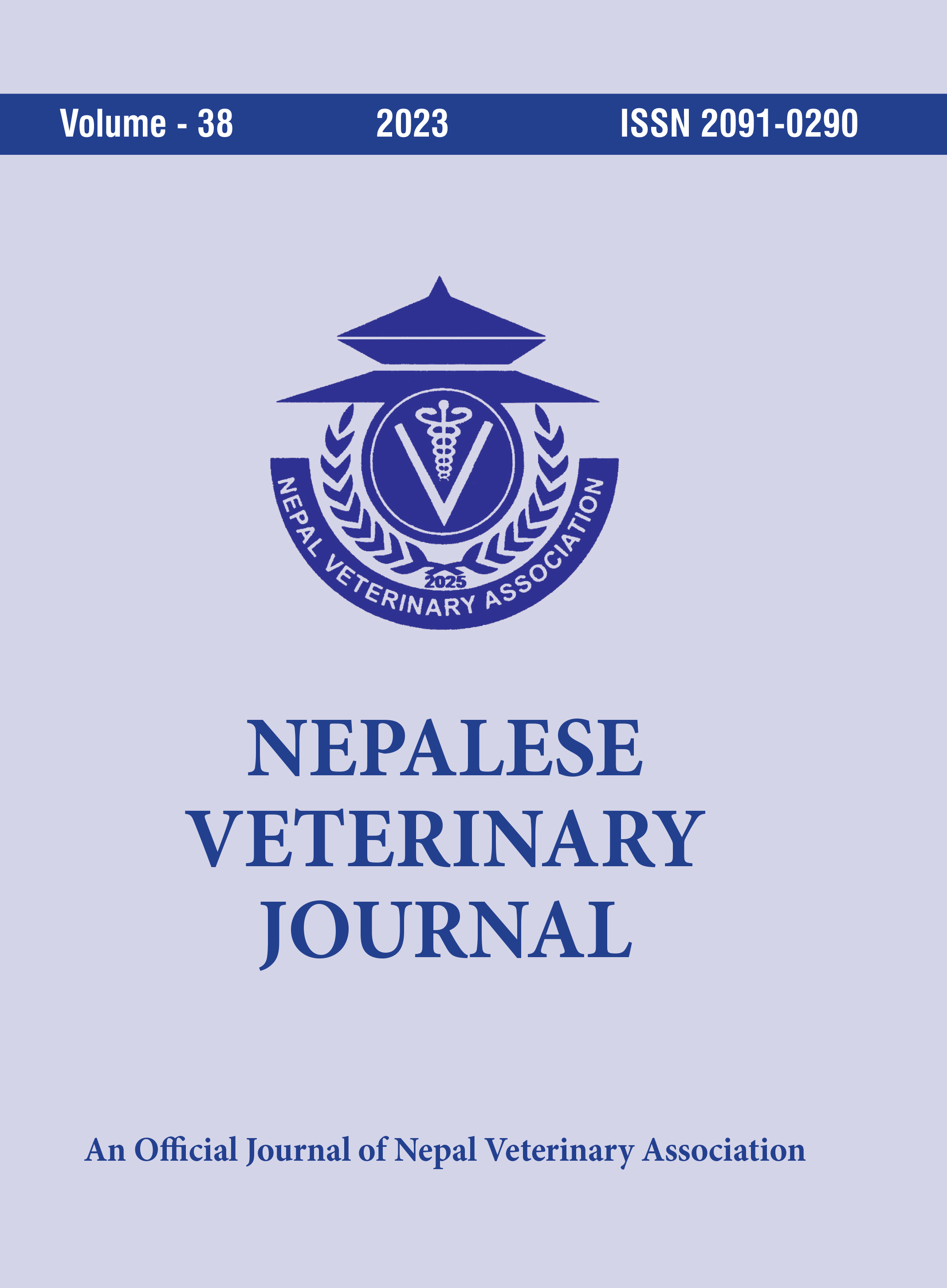Oleander Poisoning in Cattle in Devghat, Nepal- a Case Report
DOI:
https://doi.org/10.3126/nvj.v38i1.55872Keywords:
HPLC, Glycosides, NSAIDsAbstract
Oleander poisoning, though widely seen in the Mediterranean region, is rarely seen in Nepal. The poisonous effect of the fodder is due to the accidental ingestion of the different parts of ‘oleandrin’ which contains cardiac glycosides called cardenolides causing mortality in animals. In our study, 8 lactating cows were affected after oleander leaves were accidentally mixed and chopped with Napier. After the ingestion of the mixed fodder, out of 8 cows, 5 died instantly and the remaining 3 were showing severe clinical signs such as severe depression, anorexia, ruminal atony, diarrhea, serous nasal discharge, tachycardia, and irregular heartbeat. The diagnosis of the poisoning was made by finding the chopped leaves of oleander in the feed and ruminal content. The visual observation of the oleander leaves along with gross lesions specifically in the heart causing coagulative necrosis- as it acts as cardiac glycosides- we came to diagnose the oleandrin poisoning. As there was not the availability of digoxin-specific antibodies for the therapy, symptomatic and supportive treatment was done, and the good prognosis was seen on morbid animals within a week.
Downloads
Downloads
Published
How to Cite
Issue
Section
License
© Nepal Veterinary Association




